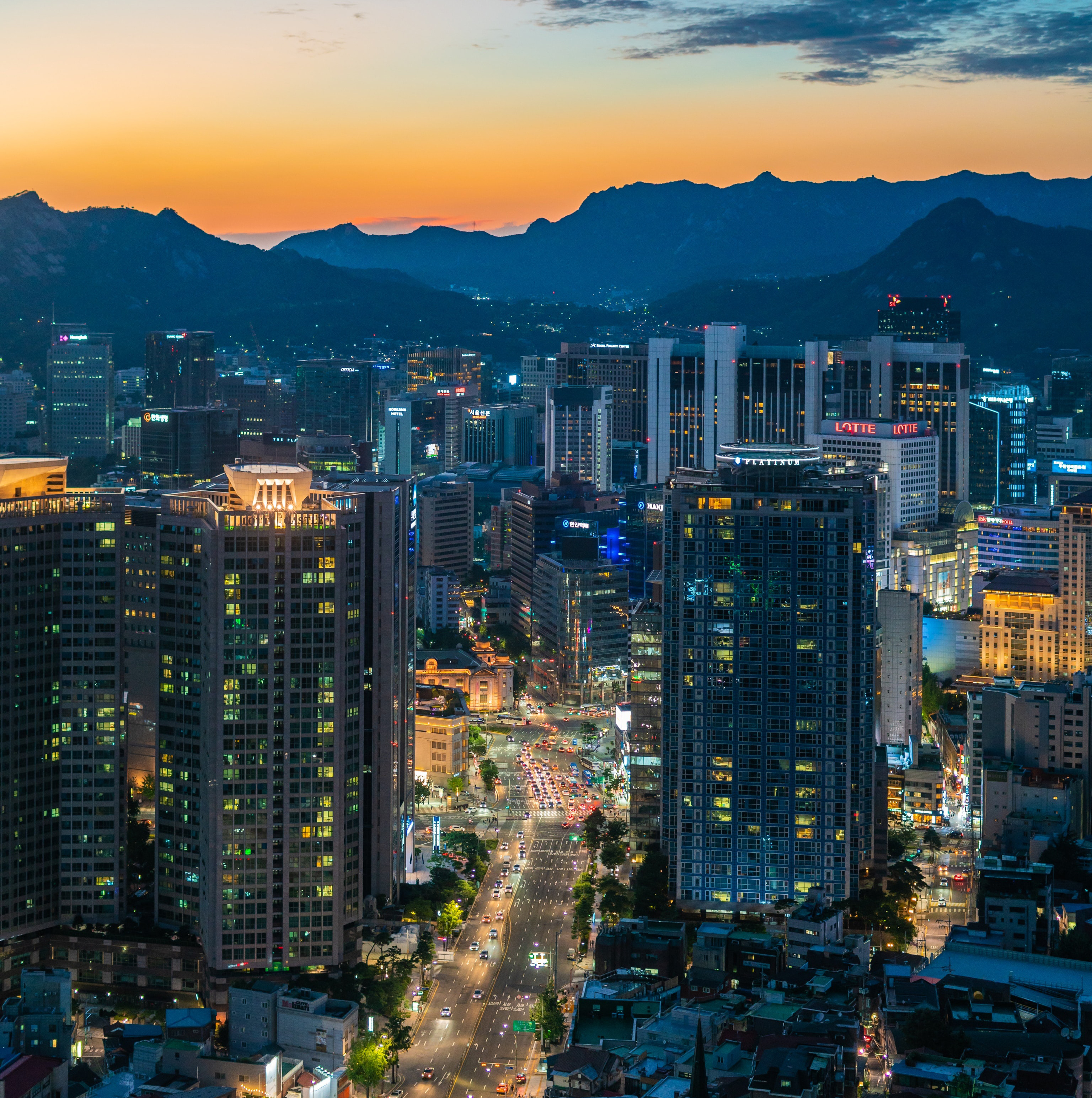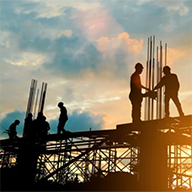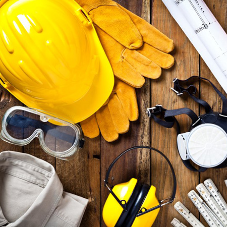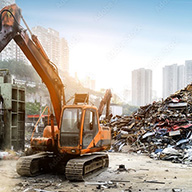While the world was being hit by the first full year of the COVID-19 pandemic, the construction sector took a considerable blow. In 2020 the UK saw an appreciable drop of 16.3% in both public and private infrastructure. According to the Office for National Statistics, construction new orders fell by 11.9%, a record low since 2013. Though external forces (like maintaining social distancing to stop the spread of COVID-19) were largely at play with these numbers, another country around the world was dealt the same if not stricter social distancing measures and saw similar numbers but in an opposite direction.
South Korea was the second country hit with COVID-19 after China. Intense measures such as forcing citizens to stay in certain cities, hybrid school systems, and law enforced mask mandates were put in place up until early 2022. Despite these measures, South Korea saw a 16.9% increase in private and public infrastructure in 2020, a 21.3% increase from the year before.
Throughout the years, South Korea’s construction sector has been growing, mostly due to the residential and infrastructure sectors in order to keep up with the constantly growing cities like Seoul, Busan, and Daegu.
While South Korea persevered during a considerable hardship, these numbers demand a closer look at their unique construction industry.
Dangers in Construction
According to KOSHA, 49.95% of total fatalities in South Korea came from the construction industry in 2018. The most common reason for death being falling from great heights. Construction is also listed as one of the most dangerous jobs in the country.
In the UK, construction accounts for the most workplace fatalities with 38 fatal injuries recorded in 2018. The average number of deaths spanning from 2013-2018 is 39 and the most common reason for death also being falling from great heights.
According to a report by the ILO: “In industrialized countries, as many as 25% to 40% of work-related deaths occur in on construction sites, even though the sector employs only 6% to 10% of the workforce.”
Bidding Systems
Since the 1950’s, Korea has adopted a very common ‘lowest-bid’ system which favours and most frequently awards contractors with the lowest-bids. Contractors then must turn a profit relying on factors within their work, rather than the pay that comes from the project awarded. Historically, such contractors will often cut on equipment and materials, purposely understaff, and slash equipment and labour costs by working fewer days, which incidentally overworks the staff.
To this day this system takes precedent over other styles of bidding systems such as qualification and turnkey. Out of 223 successful bids recorded between 2010-2012, 168 were chosen using lowest-bid while 55 were through qualification examinations.
In the US, the preferred bidding system is the ‘best value contract system’ in which both price and non-price factors are taken into consideration. Within the documents required for project bidding, both a price and technical proposal must be submitted by the bidder to show that they have the best value, rather than price. In this case, best value tends to be awarded. While cost is considered within the assessments, the final decision is based on qualification, building history, and achievements.
The UK takes a page out of each of the US’s and South Korea’s book. Similar to South Korea’s lowest bidding system, the UK has the ‘only the lowest price’ condition which is applied in a relatively simple acquisition procedure that determines the successful bidder by simply choosing the lowest price for products or services that are clearly standardized. The one factor that makes this system stand out among the two is that the ‘only the lowest price’ must not be decided within competitive conditions. If an immoderately low bid is submitted, the project manager may request detailed information to review the price according to Article 53 of EU Directive 2004/18/EC.
The second page which is most like the US’s system is the ‘most economically advantage tender’ or MEAT. While MEAT does look at cost points, other elements such as quality, technical merit, aesthetic and functional features, the environment, operational cost, cost effectiveness, post-management and technical support, and lead time are taken into consideration. The bidder who is the most economically favourable is awarded the contract within the MEAT system.
While no bidding system could exist with 100% efficacy, it’s important to note that they should be done with safety and ethics in mind.
Safety measures within South Korea
In order to prevent numbers such as the 49.95% of total fatalities in all of Korea due to the construction industry, the country has been consistently adding and amending laws regarding safety.
According to a report published on the MDPI: “The South Korean government legislated the occupational safety and health expense law, requiring companies to reserve a reasonable budget for safety management activities when budgeting for construction projects.”
The safety expense law is meant to amplify safety measures while controlling how the budget is spent to ensure it goes to the correct places. The budget includes things such as Personal Protective Equipment, safety education, and safety consulting.
This legislation, however, does not protect nor prevent workers from accidental deaths on-site due to its time sensitive standards. “The regulation enforces construction firms to spend more than half of the budget before completion of 70% of the construction project.” (MDPI) This leads to businesses spending most of the budget during the very beginning or end of the project with no regulation to spread it out over the course of completion.
According to the study published on MDPI, the researchers observed 10 apartment projects in South Korea and deduced that the highest accident rate was at the 50% progress stage which was also when the lowest amount of safety budget spending had taken place.
The article suggests that the Korean government should adjust the law to reduce the number of accidents by further regulating how the budget is spent. The budget should also be directed to ensuring that factors like: the number of workers, historical accident records, and other site conditions are considered safe within the projects.
Though it’s hard to fully analyse the construction industry of South Korea within one article, it’s important to take in these factors and research these numbers further. Comparing systems and statistics can help shed a light to hopefully help everyone in the process.
Grenfell Tower Disaster’s effect on Construction Safety
It’s been 5 years since 72 people lost their lives from the Grenfell Tower Disaster. Acts and bans have been in motion since the disaster and are still being amended in 2022.
In 2018, The Building Safety Act was introduced and finally became law on the 28th of April 2022. It entails a Building Safety Regulator which will oversee the safety and standards of all buildings, help and encourage the built environment industry to improve their competence, and lead implementation of the new regulatory framework for high-rise buildings. This includes buildings 18 metres or higher, or with more than 7 storeys.
In June of 2022, the government has extended the ban of Metal Composite Material (MCM) cladding panels with an unmodified polyethylene core on all new buildings of any height. Before then, the ban only extended to flats, schools, hospitals, and student accommodation all over the height of 18 metres.
Though there are other actions in place such as recladding and funds to remediate buildings with the MCM cladding, Dame Judith Hackitt has expressed concern over the culture of the built environment since the disaster:
“It has been crystal clear to many of us from the outset that legislation alone will not deliver the outcomes we are looking for. The culture of the industry itself must change to one which takes responsibility for delivering and maintaining buildings which are safe for those who use them.”
The Building a Safer Future Charter is a “first step towards spearheading the cultural and behavioural changes required across the industry to achieve a safer building system” according to the Building a Safer Future website. It’s an opportunity for companies to sign onto the charter and make commitments that put lives and safety first.
How can you keep up to date with UK’s health and safety laws?
The HSE has up to date information on all Health and Safety laws within the construction industry in the UK.
Find products created with the safety of construction workers and users of the built environment in mind at Barbour Product Search’s Safety Hub Page.















